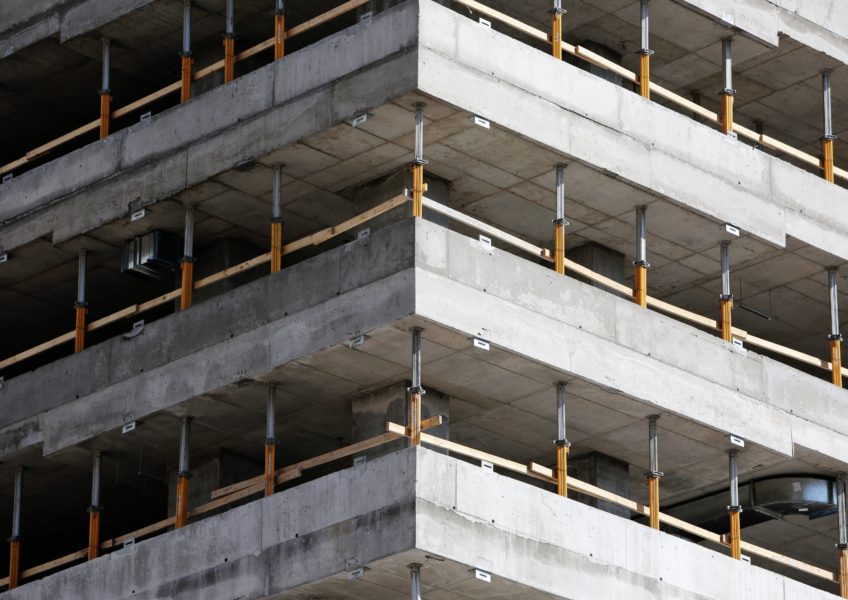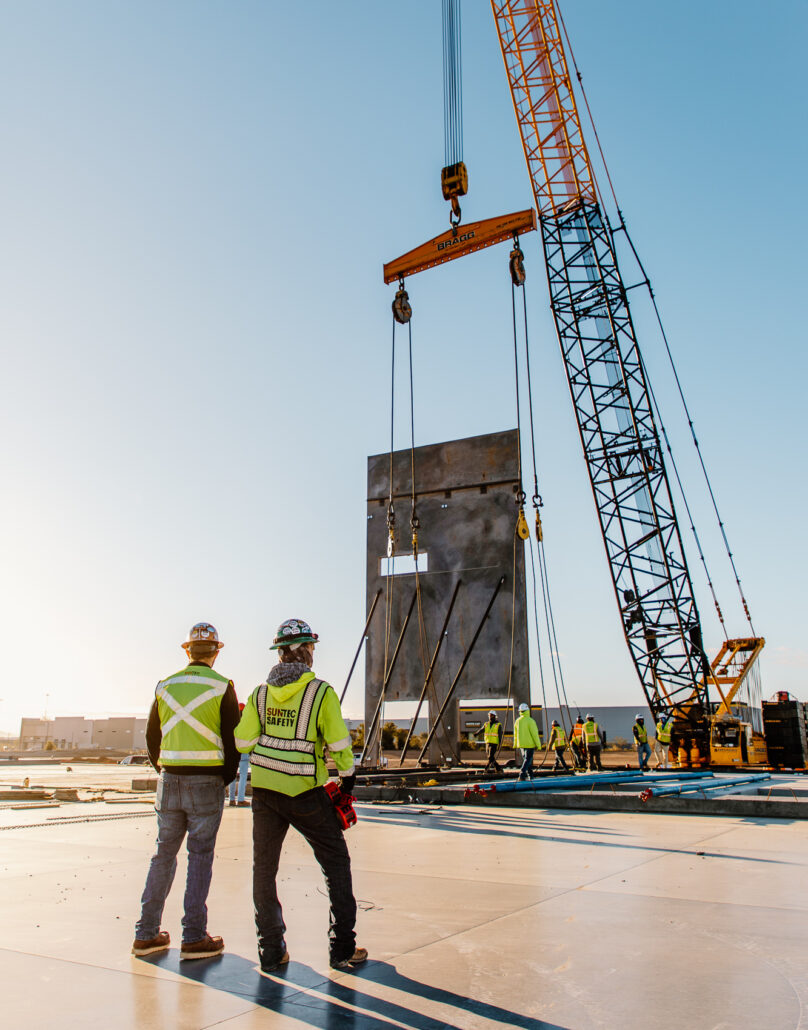Understanding the Numerous Applications of General Engineering Concrete in Diverse Industries
When you think about the numerous ways general engineering concrete impacts numerous markets, you'll locate its applications are both wide and vital. From giving strong foundations for transportation networks to sustaining cutting-edge power options, this material plays a vital role in shaping our framework. Yet what concerning its impact on urban development and environmental engineering? Checking out these aspects can expose much more than you may anticipate.
The Role of Concrete in Building And Construction and Structure Projects
Concrete plays an essential role in construction and building jobs, making up around 70% of all products utilized in contemporary structures. You'll find it in foundations, wall surfaces, and floors, providing strength and durability. When you pick concrete, you're going with a product that can withstand climate conditions, resist fire, and support hefty loads. Its convenience permits various applications, from residential homes to towering skyscrapers.Mixing concrete with additives can boost its residential or commercial properties, enhancing workability and establishing times. You can additionally mold it right into various forms, permitting creativity in design. As you service your projects, consider the environmental benefits of utilizing concrete, such as its capability to reduce energy usage in structures. On the whole, concrete's dependability and adaptability make it a foundation of the building and construction industry, ensuring that frameworks are not only useful yet additionally risk-free and lasting.
Framework Development: Roadways, Bridges, and Tunnels
When it involves infrastructure advancement, roads, bridges, and tunnels are essential components that connect areas and facilitate transport. You count on these frameworks daily, whether you're travelling to work or traveling lengthy distances. General engineering concrete plays a crucial duty in their construction and resilience. Its stamina and versatility permit designers to create durable roadways that endure heavy website traffic and severe weather condition conditions.Bridges, commonly covering rivers and valleys, need particularly created concrete to guarantee safety and long life. Using strengthened concrete in tunnel building and construction not only sustains considerable weight however additionally enhances resistance versus water infiltration and ground movement.

Concrete in Transport: Enhancing Movement and Safety
As you browse with busy cities and country roadways, the function of concrete in transportation becomes evident, significantly enhancing both flexibility and security. Concrete's longevity guarantees that roadways, paths, and bridges withstand rush hour and extreme climate problems. This longevity reduces the demand for frequent fixings, keeping your trips smooth and reliable.In addition, the design adaptability of concrete enables cutting-edge structures like overpasses and passages, which effectively lower congestion and boost traffic flow. You'll discover that concrete surface areas also offer far better grip, lowering the possibility of accidents in wet conditions.Moreover, using concrete in railways assists preserve security and security for trains, making your travels more efficient. Overall, concrete's contributions to transportation not only improve your flexibility but also substantially bolster public safety and security, showing its necessary function in the infrastructure you depend on everyday.

Power Field Applications: From Power Plants to Renewable Energy
In the energy field, concrete plays a considerable role in the building and procedure of power plants and eco-friendly power installments. You'll discover it essential for building sturdy foundations, supports, and containment frameworks that stand up to severe problems. In thermal power plants, reinforced concrete structures assure safety and toughness against heats and pressure. WCGE commercial concrete.When it involves renewable energy, concrete is critical for wind generator bases, photovoltaic panel installs, and hydroelectric dams. It offers the stability needed to harness energy effectively. You might not recognize it, yet the concrete used in these applications is specifically developed to meet details performance requirements, like longevity and resistance to ecological variables
Innovative Concrete Solutions in Environmental Engineering

The Effect of Concrete on Urban Growth and Landscape Design
Concrete plays a necessary role in forming urban development and landscape design, affecting every little thing from facilities toughness to visual charm. When you assume of cityscapes, concrete structures like bridges, roads, and structures enter your mind, supplying a strong foundation for urban life. You'll discover exactly how well-designed concrete paths and plazas improve public areas, making them extra inviting and functional.In landscaping, concrete offers versatility, enabling innovative designs for patios, maintaining wall surfaces, and attractive attributes. You can produce distinct outdoor rooms that mix flawlessly with nature while keeping architectural stability. Additionally, concrete's capacity to hold up against weather extremes warranties long life, decreasing the demand for frequent repair work.
Future Patterns and Innovations as a whole Design Concrete
As metropolitan landscapes advance, the demand for cutting-edge concrete remedies is driving developments as a whole design. You'll see patterns leaning in the direction of environmentally friendly materials and lasting techniques. Researchers are focusing on establishing high-performance concrete that minimizes environmental influence without sacrificing strength.Next-gen additives and blends, like recycled accumulations and bio-based products, are acquiring traction, improving durability and reducing carbon impacts. Smart concrete innovation is also arising, integrating sensors that check architectural wellness in real-time, enabling positive maintenance.You may find that 3D printing with concrete is coming to be a lot more practical, allowing intricate designs and faster building timelines. Additionally, the combination of self-healing concrete is on the rise, guaranteeing durability and minimizing repair service costs.
Regularly Asked Questions
What Are the Ecological Influences of Concrete Production?
Concrete production generates considerable carbon emissions, consumes water, and depletes natural sources. You can minimize these impacts by discovering sustainable options, enhancing mix styles, and including recycled materials to lower your ecological impact and enhance sustainability.
Just How Does Concrete Contrast to Other Structure Materials?
Concrete's toughness and stamina typically outperform materials like wood and steel. It's functional, economical, and energy-efficient, but its ecological influence can be significant. You'll wish to consider these elements when choosing structure materials.
What Are the Various Kinds of Concrete Available?
There're a number of kinds of concrete available, consisting of standard, reinforced, high-strength, lightweight, and ornamental. Each type offers details objectives, so you can pick the one that ideal fits your job's needs and demands.
How Is Concrete Recycled and Reused in Construction?
You can reuse concrete by crushing it right into accumulation, which you then reuse in brand-new building tasks (West Coast General Engineering Concrete). This procedure minimizes waste, reduces costs, and decreases the ecological influence of sourcing brand-new products for your builds
What Safety Steps Are Needed When Collaborating With Concrete?
When collaborating with concrete, you ought to put on safety gear, like handwear covers and goggles, guarantee proper air flow, and use risk-free training methods. Always adhere to safety guidelines to stop injuries and maintain a secure workplace.